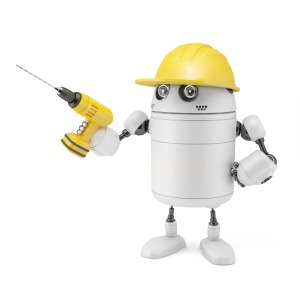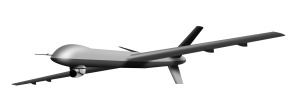Hardware has been pushed to the back pages a lot of times – what is cool is the software that sits on the hardware. We don’t want to be bothered with thinking of servers, smartphones, computers, tablets, touch screens, televisions, appliances etc etc…we just want our apps! But hardware is making a come back, at least in the cool category. There are some changes coming to your supply chain…that being powered by changing hardware.
- Robotics – okay okay, I know that automated factories is nothing new…but we are seeing a new surge in how robots are being leveraged within the factory and warehouse. It is nothing new to see robots on assembly lines. However companies like Kiva Systems have pushed robotics deeper into the supply
chain. Their orange robots gained fame by being integral in Zappos’ warehousing. The robots did the majority of pick and pack for the online shoe company. The joke was if you saw a light in the Zappos distribution center it was bad – a human was most likely fixing a robot! The horror…otherwise the robots did not need light…or a lunch break. But the robot influence is not limited at the warehouse or factory floor, companies like iRobot – best known for their Roomba robotic vacuum – offer a number of robotics for areas such as telemedicine and video collaboration. Think about the possibilities of this platform for such areas as after sales servicing. A technician could also have a telepresence robot that is tied back a veteran technician who could be located in one place but bring their expertise to numerous robots at once. Robots will also help do the 3D jobs – Dirty, Dangerous and Dull. Being able to off load these jobs to robots will free up the human for more valuable roles within the supply chain.
- Drones – one could argue that drones are a subsection of robots…and you would have grounds for an argument, but I think they deserve to be discussed separately. What makes them unique is that the drones I am speaking of are the robots that fly. Drones became a part of our vocabulary through their usage by the US military. From a commercial usage we got our first taste of the possibilities when Jeff Bezos of Amazon went on 60 Minutes a year ago and suggested that some day in the near future we might be getting our Amazon packages delivered by drones. While Bezos has since tempered his Amazon
deliver via drone, we are starting to see actual usage of the technology to solve some logistics’ issues. DHL has started employing delivery drones to make deliveries to remote areas in Germany. Our supply chains have really only scratched the surface when it comes to using drones. We will continue to see them being leveraged for logistics but also to assist with tasks otherwise challenging to address. Companies are looking to use drones to go “look” at potential maintenance issues in places that are difficult for humans to reach – for example, drones could inspect parts of oil facilities or factories that are difficult to access. Drones will play a greater role in our society and our supply chains. This time next year Santa Claus might very well be using drones to help him deliver his presents.
- 3d Printers – Last week I took my son to a 3d printer store, and it was great to see how a 7 year old reacted to seeing the printers making a wide array of “things.” Dinosaurs, building models, snow men and other shapes. What I saw was the ability to change how we manufacture, how we deal with spare parts inventory and even impact logistics. Bringing 3d printers to the manufacturing floor will offer new methods but can also expand the factory floor. Manufacturers could place 3d printers closer to the final customer for products that might require some customization or assembly. One can imagine mobile 3d printing capabilities – allowing for true delaying of production and JIT (just in time). Companies like Nike are already experimenting with using 3d printers to make their sneakers. A customer could walk into a Nike retailer, customize a shoe and have it printed on site. True customization. With regards to spare parts, companies such as Airbus are looking to leverage 3d printers to keep certain plane models in service longer. Their vision is to leverage 3d printers to produce specific spare parts that would otherwise not be cost effective to continue to manufacture. When it comes to logistics – we are always trying to solve our last mile issue with regards to delivery. What if your local Staples or OfficeMax had a 3d printer and you could have some of our deliveries sent to the store and printed? Between drones and 3d printers we might have competing hardware solutions for the last mile delivery challenge!
- Wearables – Mobility has had a deep impact on our supply chains already. This should come as no surprise as the BYOD (bring your own device) wave has swept over businesses in general. But I am not just speaking of greater usage of smartphones and tablets in our supply chains. Wearables are the next evolution – dedicated, connected items that we wear. The most common wearable is Google glass. While the jury remains out as to whether or not it will catch on, the genie is out of the bottle when it comes to growing usage of wearables. We are seeing the usage of Google glass in the factory, companies like Plex Systems are demonstrating how they are integrating the hardware with their solutions to add efficiencies on the factory floor.
Other solution providers like Unvired are leveraging Google glass into their warehouse solutions – bringing greater efficiencies to the pick – pack process. Warehouse workers, using the Google glass hardware coupled with the Unvired solution have hands free access to vital data that makes their job more efficient. Look for wearables to impact a growing number of other parts of our supply chains such as logistics, maintenance and service, POS (point of sale) to name a few. Wearables offer greater mobile intelligence, think of them as adding this enhanced connectivity at the edges of the supply chain network. Look for this added capability to open new business models and capabilities.
- Sensors – The internet of things (IoT) has permeated many of today’s headlines. Pundits speak of all the wonderful things that will come from being able to connect an every growing part of our infrastructure and supply chain. But what is one of the underlying technologies to make this possible? That’s right, the inexpensive and smart sensors – the hardware – needed to make this connectivity possible. Companies like GE are working to infuse a greater number of sensors into their products from locomotives to wind turbines to airplane engines. The sensors throw off a wide array of data allowing for better monitoring of the assets, usage and network optimization. As these sensors continue to drop in price – look for their usability to be expanded to a greater number of assets and products. Sensors and IoT hold tremendous potential for driving greater network optimization for supply chains – providing the necessary solutions and hardware to achieve greater network visibility. And much like wearables – pushing control and intelligence to the edges of the network.
These hardware evolutions have and will continue to drive innovations in our supply chains. Of course these are all tied into software and intelligence that make the hardware “smart” and useful. Reality is the line between hardware and software has blurred over the past few years and will continue to do so. But companies need to think about reinvesting in hardware to take advantage of these new innovative tools.




